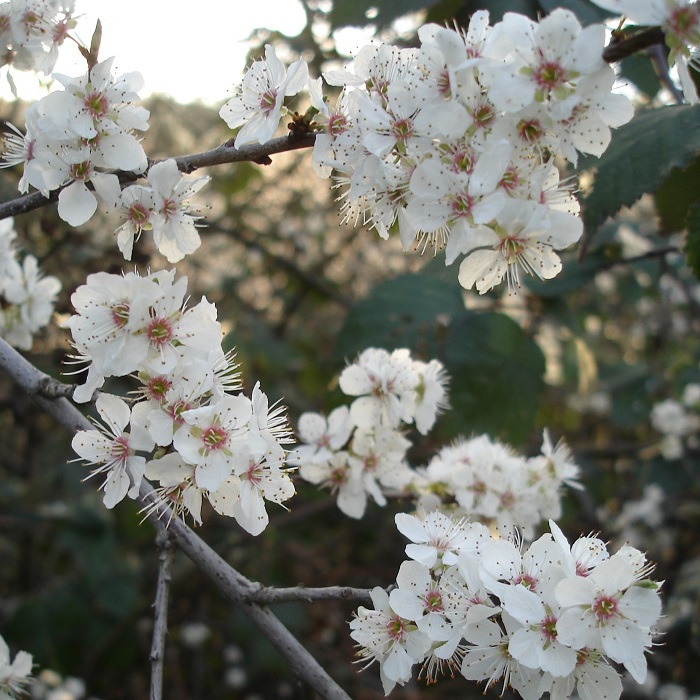UNITED STATES—Properly pruned deciduous fruit trees probably do not have too many extra stems to spare now. Neglected trees would have more to offer. Believe it or not, a few of us who prune deciduous fruit trees diligently and meticulously in winter sometimes leave a few unwanted stems to prune out and take into the home now that the flower buds are beginning to swell and are about to bloom.
Bloom accelerates once the bare twigs are inside where the nights are warmer than outside. If the buds are plump enough, they can bloom in a day or a few. (If not plump enough, the buds may desiccate before they bloom.) Twigs that are already blooming can be brought in as well, but do not last quite as long. Blossoms are a bit messy as they later drop petals, but are worth the bother.
The technique is simply known as ‘forcing,’ which works something like forcing bulbs to bloom prematurely. Timing is critical. If a few blossoms are already blooming elsewhere on the tree, the fattest unblooming buds that are already showing color are ready to be cut and brought in. They only need to be put in a vase with water like any other cut flower, and can mix with other flowers.
Stone fruits (of the genus Prunus) like almond, apricot, plum, prune, peach, nectarine and cherry, start to bloom about now, although not in this order. Apple and pear bloom later. All their fruitless counterparts, known simply as flowering plum, flowering cherry, flowering crabapple and so on, are even more colorful, and some types bloom with ruffled double flowers. All bloom without foliage.
Flowering quince and forsythia have already bloomed, but would have been the most spectacular bare twigs to force into bloom. Pussywillow is probably the most familiar forced bloom twig. Hawthorn (Crataegus spp.) blooms something like pear, but the aroma may be objectionable to some. More adventurous garden enthusiasts force witch hazel (winter), redbud and star magnolia.
Highlight: wild plum
Unlike all the fancy and popular Japanese plums and European prunes, wild plum, Prunus americana, is almost never planted intentionally. It is a common understock for the more desirable types, and usually grows as suckers from below graft unions. In fact, it often grows from the roots of plum or prune trees that died or were cut down earlier. They can eventually form thickets.
Well groomed trees can get more than 15 feet tall and broad. Even diligent pruning can not remove all of the sharp short twigs that make the stems seem thorny. Collectively, the simple and small white flowers bloom very profusely. The thin leaves that emerge after bloom are about two or three inches long. The small and soft red plums are only about an inch wide, with big pits.
Wild plum trees are very resilient, and can can survive in abandoned gardens, but really prefers occasional watering. They will lean away from the shade of larger trees. New trees do not often grow from seed, but if they do, they might be distinctly different from the trees that produced the seed. Some might be hybrids with other plums. Some might produce amber yellow plums.
The fruit may not be as fat and sweet as popular garden varieties of plum, but happens to be excellent for traditional plum jelly, either red or amber.






